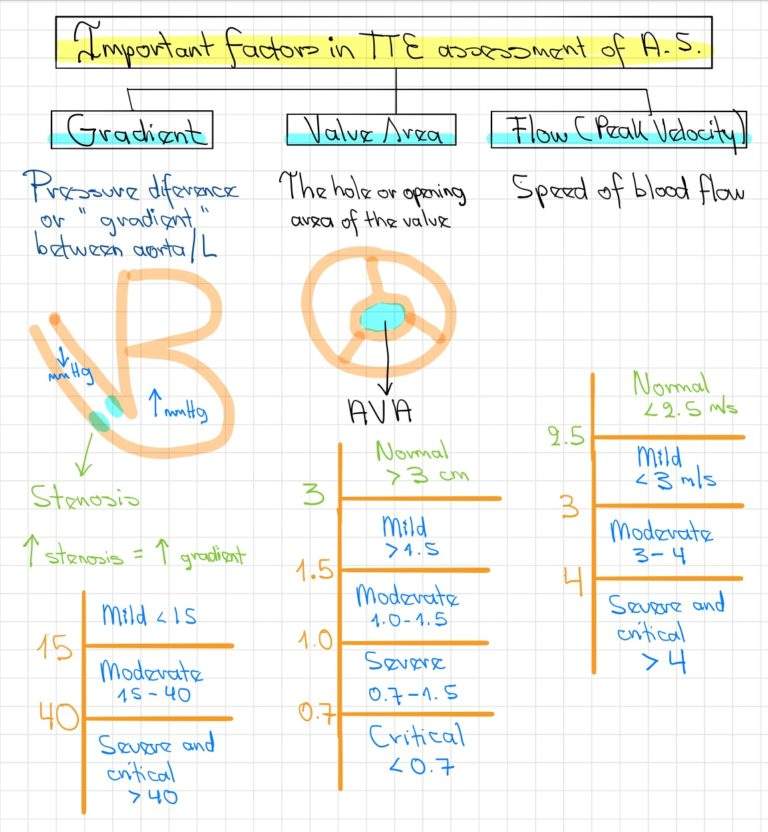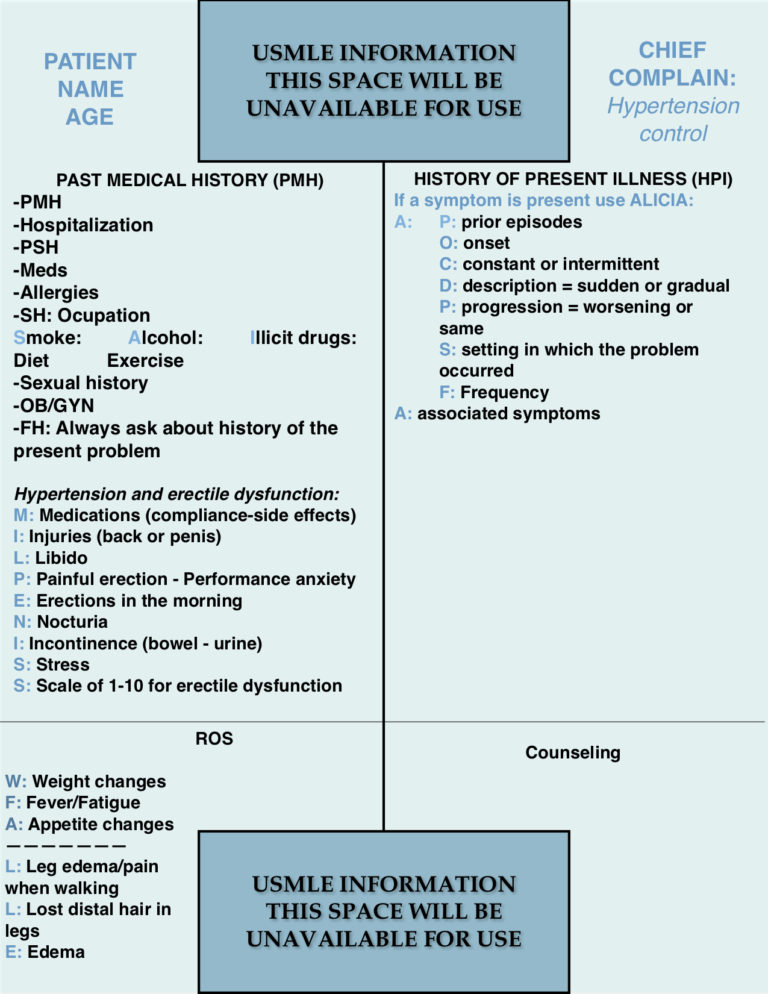Objective: Describe useful test-taking strategies for the USMLE exams so that the reader gets ready to understand how to approach a question in a more effective way and start practicing it on a daily basis. The same strategies may be applied to other exams as well.
An examinee using proper test-taking strategies during a test can perform better than other lacking such abilities in most cases. Doing well in challenging examinations such as the USMLE exams requires hard study, dedication, usage of valuable resources, getting guidance from people and institutions with experience with this type of exam, practice or mock exams, repeating questions by using a Q-bank, training the test-taking strategies and others depending on personal preferences. However, acquiring the capacity of picking accurately best choice from a set of options in a question significantly affects an examinee’s performance. In other words, an adequate knowledge foundation does not guarantee a good score without a correct exam approach and that is why developing test-taking skills is a key factor to ace the USMLE exams.
On the other hand, it is very important to understand correctly the examination we are about to take since every exam has its own characteristics (to know your enemy). It is crucial to read the pertinent information provided by the exam sponsor. In case of the USMLE exams, please, use their website to find information about the exam you will be taking. You can find the USMLE website by clicking on the following link:
Another important way of mastering a test is to create an exam day strategy in which the time management is one of the major concerns. For that reason, I invite you to visit the following links that explain the exam day strategy for the USMLE Step 1 and Step 3 exams:
WHAT IS TEST-WISENESS?
Test-wiseness is a subject’s capacity to utilize the characteristics and formats of test and/or test-taking situations to receive a high score (Hyde 1981). Therefore, if an examinee masters these skills will perform well in almost any test situation knowing what to do not only during the test but before and even after it. Wise test-takers have improved attitudes toward testing, have less test anxiety and achieve better grades ( Jaiprayoon & Vattanapath, 1999). Instead, it is known that students familiar with the content and adequate knowledge may do poorly because they lack test-taking skills (Sweetnam, 2003). It should be an examinee’s major objective to pursue acquiring test-wiseness.
BASIC FORMAT OF A USMLE QUESTION
The USMLE exams have multiple-choice questions each with a single best answer. This means that the answer one selects during the test should be the best of all the available options. There are usually 4 or more choices to pick from. After analyzing the question, it is common to have two or three options from which we will need to choose the correct one. The test-taking strategies alone can help resolving this situation often times.
A USMLE question usually contains the following parts:
1. Stem (or clinical vignette): It contains the patient’s or question’s information from which we will take the data necessary to answer the question.
2. Question: It is the question asked after the stem. It is important to read carefully what one is being asked. For example, it is not the same to ask the following two questions:
A 67-year-old shipyard worker man was recently diagnosed with lung cancer. He has never smoked cigarettes.
- Which of the following risk factors has a higher association with lung cancer?
- Which one of the following risk factors in this patient has a higher association with lung cancer?
a. Smoking.
b. A family history of lung cancer.
c. Asbestos exposure.
d. COPD.
The difference in these questions is minimal, however, the words “in this patient” written in the second question change completely the answer to be chosen comparing to the first question. The answer to the first one is “a” while the answer to the second one is “c” since the patient has never smoked cigarettes in the past but has an occupation that puts him at risk of asbestos exposure which is highly associated with lung cancer.
3. Answer options: These are all the possible choices to choose from. There is only one correct answer and the rest are considered distractors. Learning to choose the correct option takes practice and preparation.
HOW TO APPROACH A USMLE QUESTION
- Read the question itself: Before reading the stem, focus on what is being asked. For example, in the previous question about lung cancer, one would need to look for different information in the stem depending on what is actually written on the question. There is a difference in what is asked on the first question compared to the second.
- Read the stem: After understanding clearly what are you asked to do with the question, continue to the stem looking carefully for the answer to the question.
- Choose the answer: Choose the best option for the given answer choice.
These three steps can be improved with test-taking strategies so that you will know exactly how to play your cards. There are other ways to approach a question. For example, some people read the question first, then see what options are present in the answers and then they read the question stem. It is valid and works for some people but the obstacle with this approach is that the timing can be affected because of that extra step needed. Therefore, it is up to the test-taker to practice and become familiar with an approach that suits his or her needs and use it every time to master it.
What are the most common mistakes examinees have during an exam?
- Wrong attitude toward the exam. One may perform much better when motivated and positive rather than when not willing to do your best on it.
- Failure to pace and manage time.
- Failure to read carefully the question and stem.
- Not answering what the question is actually asking for.
- Changing a well-thought answer (second guess) when not sure about it.
TEST-TAKING STRATEGIES FOR EVERY PART OF THE QUESTION
1. Strategies for the question part:
The question asked before the answer options are the main instruction of what is needed to do in a question. There are typical questions asked depending on the exam one is taking. There are no “except,” “not,” “matching,” or “incorrect” questions on the board exams. For example, one would not be asked: which of the following is the incorrect answer? There are no double negative questions neither. It is also important to learn how to identify what is being asked in a question depending on what is actually written and not get confused by paraphrasing. Let us review an example:
A 30-year-old woman with a past medical history of asthma comes to the emergency department because of a 6-day history of wheezing, chest tightness, and a cough productive of clear sputum. Her pulse is 80/min, respirations are 16/min, and blood pressure is 120/80 mmHg. Physical examination shows clear tympanic membranes, no eye erythema or secretions and no erythema or exudates in the oropharynx. Diffuse expiratory wheezes are heard on auscultation of the lungs. Which of the following substances is most appropriate to treat this patient’s cough at this time?
a. Albuterol.
b. Tylenol.
c. Dextromethorphan.
d. Pseudoephedrine.
e. Theophylline
In this question, the correct answer is “a” because the cause of the patient’s symptoms is her asthma. Analyzing the question “Which of the following substances is most appropriate to treat this patient’s cough at this time?” should make one understand the easiest way to understand the point being asked: what is the best treatment for this patient’s cough at this time. In this question, this task is not so hard, but one should try to do it in every question regardless of the difficulty with which the question is described. That will give us an advantage when solving this type of questions.
Let’s understand the most common questions asked on the exams:
What is the most likely diagnosis?
This is a very common question. There are no secrets to this question, one needs to pick which one from the options list is the best answer.
What is the most likely cause?
This question asks about the cause of an event or disorder described on the stem. It is very important to read carefully as with what was described in the lung cancer question above where a little change in the written information of the question can make a difference in the selection of the answer.
Which of the following is the most appropriate treatment for this patient?
One must be careful with this type of question because what is most appropriate may not be the same as saying what is the best initial treatment versus what is the definitive treatment. If the initial treatment will save the patient’s life, that should be the most appropriate treatment. However, this is more simply said than done. Controversial questions will not appear in the board exams.
Which of the following is the best next step in the management of this patient?
In this type of question, it is important to remember that the best next step in management can be a test, treatment, intervention or other action and is not only referring to treatment. For example:
A 28-year-old male with chest wall trauma due to a MVA is brought to the emergency department. He refers severe chest pain, marked shortness of breath, decreased breath sounds on the left side of the thorax and deviation to the trachea to the right. Which of the following is the best next step in the management of the patient?
a. IV morphine administration.
b. Chest X-ray.
c. Needle decompression.
d. IV fluids.
e. Start CPR.
In this question, the answer is “c” needle decompression since the high pressure on the right side of the thorax is the cause of the patient’s marked shortness of breath. IV morphine which is a drug treatment may be needed but is not the best next step in an urgent situation such as this one. The same can be said about a chest x-ray and IV fluid administration. CPR should be started in a cardiorespiratory arrest or if the patient becomes unresponsive for example, but is not needed at this moment. Therefore, depending on the case, the best next step in management can be a medication, intervention, diagnostic study or any other required action.
Which of the following is the best next step in the treatment of this patient?
This is more specific than asking about the most appropriate treatment. One should select the most important initial treatment to be given.
What is the most likely mechanism that triggered this patient’s symptoms?
This type of question asks about the mechanism that causes a disease or effect. For example, if a question describes an anaphylactic reaction secondary to a bee sting and asks what is the most likely mechanism of action that triggered this patient’s symptoms? the answer could be the release of pre-formed cytokines from mast cells.
What is the mechanism of action of the drug used to treat this patient’s condition?
Asks about the mechanism of action of a certain medication.
Which of the following additional findings is most likely to be seen in this patient?
This is another way of asking what is the most likely sign or symptom that the patient most likely has besides the ones described in the stem.
There are tons of ways in which questions can be asked in the board exams. Therefore, practicing questions and keeping in mind these considerations can help one to become familiar with what a question asks and what is needed to do. Practice questions should always be analyzed not only in the scientific content but also in a test-taking strategic way. The test-taking skills are improved by practicing questions over and over. It is very important to understand the question very well before reading the stem or the answer options.
2. Question stem or clinical vignette strategies
The stem of the question contains the most important information of the questions and is like a map that when is used in the correct way takes you where you need which is a right choice. It contains the patient’s information, a study description, a laboratory experiment or concept to be tested, etc. Let us understand about the contents in the clinical vignette:
- Patient’s demographic information: age, gender, occupation, geographic location, etc.
- Past medical history: hypertension, diabetes, COPD.
- Social history: eg. the patient has a 20-year history of smoking 2 packs per day. He denies alcohol or recreational drugs use.
- History of present illness (HPI): For example, the patient presents to the ED due to severe chest pain and shortness of breath since 1 hour ago. The pain is constant, retrosternal without radiation, 6/10 in intensity, worse with exertion and better at rest.
- Review of systems (ROS): the patient denies fever, headaches, nausea or vomiting, changes in urination, etc.
- Physical examination: eg. there is a systolic ejection type murmur in the second left intercostal space.
- Workup labs and imaging: His CBC shows a WBC of 13.000 with a predominance of PMN.
- Management: He was given oxygen and morphine in the ED at admission.
- Interventions: The patient underwent pacemaker placement 2 days ago due to a third-degree AV block.
- Other data: His son who is with him indicates that his father said that he does not want to receive any life-saving intervention in the case that he becomes unresponsive.
Note that a clinical vignette is an actual patient clinical history with physical examination, workup, medical and surgical management, and other aspects that have influenced their medical status until the present time. There is something that can help you cope with the nuisance of a question; if you imagine that instead of solving a question for a board exam needed to be passed and forgotten, you have a real patient in front of you that has put his life in your hands hoping that you will do everything to save him can help drive you to try to find the correct answer. Motivation is a key component of excelling during an exam.
Everything that you see in the question stem is important. Most of the presented information is important and there are usually a few facts that only aim to confuse the test-taker. On the other hand, the clinical data such as physical exam findings and labs are always important. Do not forget to check the vital signs, for example, should you have a patient in the emergency department with acute psychotic symptoms such as hallucinations, if the vital signs show hypertension or tachycardia, that indicates an organic cause (such as illicit drug use) is more probable than a psychiatric cause such as an acute psychotic episode.
3. Strategies for the answer options
a) The process of elimination:
After we have read carefully and understood what the question is asking and reviewed the question stem we will be ready to answer the question. One of the best ways to do it is by using the process of elimination. The objective is to answer the question by striking out all the incorrect options first and then choosing our best choice instead of selecting directly the answer from the list. This will allow us to discard the noticeably incorrect options and decrease the chances of selecting an incorrect answer. Once this skill has been mastered, the end result usually allows one to end up with two answer options to choose from which gives us a very good 50 % chance of getting the question right. When the process of elimination is not applied, the chance of getting a question right when it has five answer options is 20 %.
To apply the process of elimination one can read every option starting from the first one and decide if they could be the correct answer or not. If we are unsure, the best initial action is to avoid striking it yet and move on to the next options until the obviously wrong answers have been eliminated. There is a strike down option in the board exams if one clicks on the answer option to be eliminated so that it does not distract us. Do it with all the options that you are sure they are not the correct answer to make your answer option list as short as you can. The process of elimination helps to start answering a question and then other test-taking strategies may help to completely answer the question with a higher chance of getting it right.
A 59-year-old woman comes to the office due to 1 month history of headaches. Her past medical history is noncontributory. Her headaches are progressively worsening, are pulsatile in nature, located in the right temporal area, 6/10 in intensity, last approximately 4-8 hours and disappear. She also refers having tenderness in the right temporal scalp when combing her hair. She was seen a week ago in an outpatient clinic where she was diagnosed of tension headaches and received acetaminophen that has provided only a partial relief of the pain. She denies having changes in her vision, lost appetite, changes in weight, but does refer having stiffness in her shoulders during the past 6 months. A blood workup shows a CBC with WBC count of 10.000 and an ESR of 125 mm/hr.
Which of the following is the most likely diagnosis?
a) Tension headaches.
b) Cluster headaches.
c) Trigeminal neuralgia.
d) Migraine without aura.
e) Giant cell arteritis.
f) Fibromyalgia.
In this case, we may use the approach already explained before to analyze the question (read the question, the stem or clinical vignette and then the answer options). Here is when we can apply the process of elimination by reviewing one by one the answer options:
a) Tension headaches: Tensional headaches are usually bilateral and band like and improve significantly with acetaminophen in most cases. An elevated ESR should not be seen in a tensional headache, therefore, it can be safely stricken out.
b) Cluster headaches: Cluster headaches are common in men and are usually unilateral, retro-orbital, with prominent autonomic features such as lacrimation, miosis, ptosis, conjunctival injection. They appear in bouts or attacks and that is why they are called cluster headaches. None of this features are present and we can eliminate this option.
c) Trigeminal neuralgia: It appears in short-lived attacks (lasting seconds) of severe facial pain in the trigeminal nerve distribution, it is extremely painful and it can be triggered by touching the face in the trigeminal distribution when shaving, chewing, smiling, brushing teeth. This patient’s pain lasts for hours and that would be atypical for trigeminal neuralgia.By process of elimination, we can rule out this option.
d) Migraine without aura: Migraines are unilateral, last for several hours to days and improve when the patient is resting in a dark and quiet room. They usually do not get better only with acetaminophen as in this patient. However, an elevated ESR would not be expected. However, in case of doubt, you could leave it as an option for now.
e) Giant cell arteritis: Patients with giant cell arteritis are usually 65 years old or more. The headaches are usually temporal and described as the ones in this case. An elevated ESR is highly associated with this disorder and polymyalgia rheumatica can also be seen as stiffness of the shoulder and pelvic girdle muscles. Therefore, this is the best answer to this question.
f) Fibromyalgia: There can be headaches associated with fibromyalgia. This disease also presents with prominent psychosomatic symptoms such as anxiety, depression, irritable bowel syndrome, urinary complaints and generalized muscle pain. However, stiffness in the shoulders as in this patient would not be expected although there could be a neck muscle strain that simulates this symptom. An elevated ESR would not be expected. Having no history of similar symptoms makes it less likely as well. Therefore, we can rule out this option.
In summary for the process of elimination in this question:
If we were to end up with two possible options such as in this case where a migraine without aura and giant cell arteritis being possible answers, we should choose the “best choice.” Having an elevated ESR is more consistent with GCA, therefore, the answer “e” giant cell arteritis should be our election.
Practice the process of elimination in every question that you do. It can be difficult and will probably take longer to solve a question using this approach but it definitely increases your chances of selecting a correct answer to most questions you may do.
b) Identification of possible right and wrong answers:
We can try to identify possible correct or wrong answers by looking for the following hints:
- Does this option actually respond to what is being asked in the question? This is very important. Sometimes the statement may be correct but does not answer the question and consequently is wrong.
- If it contains the words never, always, all, none or absolutely is usually incorrect.
- If two answers are exactly opposite, one of them is probably the correct one.
- Your first thoughtful choice is usually the correct one. Do not change an answer unless you are completely sure about why you are changing it.
- Partially correct answers are not the correct answer.
- Choose the gold standard test or intervention over the latest theory on a topic.
- Do not pick treatments or interventions that are harmful or clearly outdated.
- Midrange options are usually right. If we are given the options surgery or do nothing, the answer will probably be something in the middle.
- The most difficult or rare options are usually wrong. if you see Fields’ Disease in the options, probably is not the correct answer unless you are sure that all the other options are not right.
- Timelines are very important. If a patient is presenting psychotic symptoms for 3 months and the answer options are schizophrenia or schizophreniform disorders, the timing makes schizophreniform the best option in that question. The same applies to treatment (3 days vs 10 days for example).
- There are a lot of diseases that appear only as distractors on the answer options. For example, Lambert-Eaton Myasthenia Gravis. They are usually not the correct answer and thus it is important to learn a little about them too since they will always be distractors that confuse you until you know them.
GENERAL TEST TAKING STRATEGIES TO CONSIDER:
- Do not get frustrated by long question stems, especially during your USMLE Step 2 CK and Step 3 exams. Usually, long questions are easier than regular questions.
- Take the necessary time to read and analyze the questions, especially the stems and do not rush when choosing an answer. However, if you are taking more than what you usually take to answer a question, it may be more efficient to make an educated guess and move on. You may get that question wrong, but you will have the time enough to get other questions right. Do not waste time. Equilibrium in this matter is the key.
- Guessing is not penalized. The best way to guess is to use the process of elimination if possible and then make an educated guess selecting the best option on that list.
- Always answer all the questions as you go on. If you are not sure about the answer to one question, make your best guess and flag the question so that should you have time to go back you can continue working on it. If you skip the question and at the end, you run out of time, you will lose the chance of at least guessing the question.
- If given a picture. Do not panic! Read the question and maybe looking at the picture may not even be needed.
- Select the letter of the day you will answer in the case that you have no idea what to answer or you run out of time. It was usually said that “c” is the most common answer choice in the majority of exams. However, USMLE knows this fact very well. Tricks do not work in the USMLE exams. It seems that the options B or D are the most common correct answers in some studies, however, there is no conclusive data of this and we will not promote it.
Finally, one must understand what are the distractors or foils in a question from the question writer perspective.
DISTRACTOR ANSWERS OR FOILS IN A QUESTION
The distractors or foils are clearly incorrect answers that may look correct for the test-taker. Thus these are the most difficult things to create when writing a question since its quality will affect the difficulty of the question. However, they should be created by following these rules that we can learn to identify:
- They must be incorrect or clearly inferior to the correct answer. It should not be controversial.
- They should not contain clues that can point the correct answer.
- They should look attractive and proper answers to the uninformed examinees.
- They should be similar in length and structure to the correct answer. In the USMLE exams, the more lengthy answer may not be the correct one. Be careful.
- They must be homogeneous. If there is a distractor that is a physical finding, all the other distractors should be clinical data as well and not laboratory tests or other studies.
This concludes this very important topic that influences dramatically how one will perform in a board exam. I hope you enjoyed this post. Please, do not hesitate to contact us if you have a question or comment. Good luck and study hard!
- Aortic Stenosis Severity Classification - 09/22/2020
- Carboplatin (Paraplatin) - 04/07/2019
- How to test for Vitamin D deficiency? - 09/29/2018







you have saved my life. Thank you! I’m studying to crash the boards as well. Good advice.
I am happy to know it helped you. Good luck with your exams Pamela!